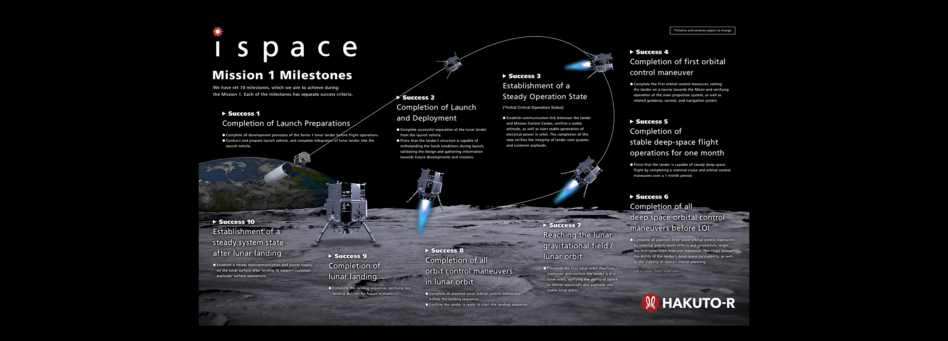There’s about to be a new Moon mission in play. SpaceX is set to launch the HAKUTO-R mission from Cape Canaveral, beginning a small Japanese company’s long journey to softly place a lander on the lunar surface.
The Falcon 9 launch for ispace scrubbed early this morning to take extra precautions before liftoff, and has another attempt planned for tomorrow morning. When it launches, it will send the lander on a three-month-long trajectory to the Moon. Two other missions will also stow away on the flight: an Emirati rover and a NASA lunar orbiter.
The main event: ispace is tracking to make Japan the fourth nation ever to successfully soft-land a spacecraft on the lunar surface (following the Americans, Soviets, and Chinese). Moreover, if the startup succeeds, the HAKUTO-R lander would become the first craft completely funded and built by a private company to land on another celestial body.
ispace began working on its lander to compete for Google’s Lunar X Prize, which offered a prize to the first non-government entity to land a craft on the Moon. The competition ended in 2018—sadly, without a winner—but ispace kept at its design.
- SpaceIL, an Israeli organization and X Prize competitor, came up just short in 2019 when its Beresheet craft crash-landed on the lunar surface.
Back to ispace: Rather than following a trajectory straight to the Moon, HAKUTO-R is taking the long way ’round. Its journey will take three months, tracing a long, spiraling route designed to conserve fuel.
- Mission 1 will serve as a tech demo, with ispace declaring mission success only upon a lunar soft landing.
- Mission 2 is currently slated for a 2024 launch.
Tagging along: Two additional, smaller missions will join the ispace lander for its launch.
The UAE has a small rover of its own tucked into the Mission 1 lander. Designed by the Mohammed bin Rashid Space Centre, the rover, named Rashid, would also be the country’s first craft on the Moon. The small rover will traverse the lunar surface, studying the regolith as well as plasma conditions.
NASA, meanwhile, is flying a lunar orbiter called the Lunar Flashlight aboard the mission. If all goes to plan, the Lunar Flashlight will enter a highly elliptical orbit around the Moon and then use a laser to study ice on its surface.
Zooming out: Due to ispace taking the scenic long route to the Moon, there’s a chance it won’t be the first private lunar landing. Two other companies, Intuitive Machines and Astrobotic, are also vying for the title and aim to launch their own landers early next year. Both would take a more direct route that could put either on the surface first.
Ispace has said it isn’t concerned with being first—instead, it’s hoping to contribute to international collaboration in a future lunar ecosystem. “We’re a quite international business already, and I’d like to position ispace as an international bridge between the US and other companies,” ispace founder and CEO Takeshi Hakamada told New Scientist. The company has offices in Japan, the US, and Luxembourg, as well as contracts with NASA and ESA for future missions.




